15 Spooky Plants for Halloween
Who needs Halloween decorations when nature provides such bizarre and beautiful creations? Display these flowers and plants to add a little haunt to your house this season...if you dare.
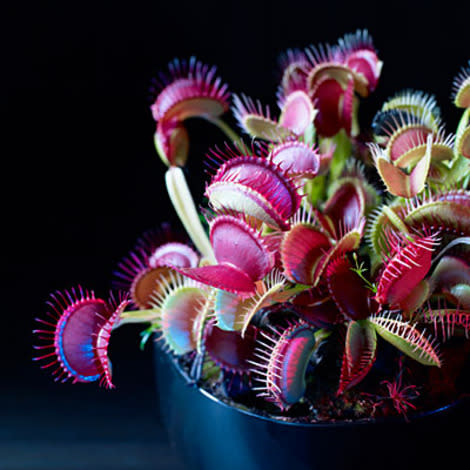
Feed me, Seymour
Place a pot of Venus flytraps (Dionaea muscipula) on the table and your guests won't be the only ones enjoying dinner. When the plant's trigger hairs inside are touched, its elegant eyelashes turn into teeth that snap shut--even emitting a slight electrical current as they close.
To grow: Venus flytraps can grow outside in frost-free climates, or as houseplants in bright light.
More Halloween decorating ideas

Dark and stormy
A handful of tall 'Hot Chocolate' callas makes for a moody bouquet. Tuck in nearly black aeonium rosettes and Colocasia 'Puckered Up', a new elephant ear, to add more dark texture.
To grow: After frost has passed, grow callas from rhizomes. Aeoniums need protection from frost. Elephant ears can grow outdoors in mild climates, and as houseplants in all regions.

Come hither
Native to nutrient-poor soils, monkey cups (Nepenthes 'Miranda') have dangling pouches that capture and dissolve insects for food. "We call them 'roach motels' because insects check in, but they're never checking out," says Mark Pendleton, manager of Brookside Orchids. Pair the plant with Spanish moss, a cobwebby mass made up of tangled airplants (Tillandsia usneoides).
To grow: Try monkey cups as houseplants; they need bright light and daily misting.

Frankenstein
Crested euphorbias (back) are like something out of a monster movie. Grafted onto stems of another type of euphorbia, their crests gradually double over as they grow. Other menacing creatures: Dyckia, a dark bromeliad (center); black mondo grass; and split rocks (Pleiospilos nelii 'Royal Flush'), camouflaged as unassuming stones in black sand.
To grow: All four plants need mild temperatures and minimal water. They are happiest outside in arid, frost-free areas, but the succulents will thrive indoors too.
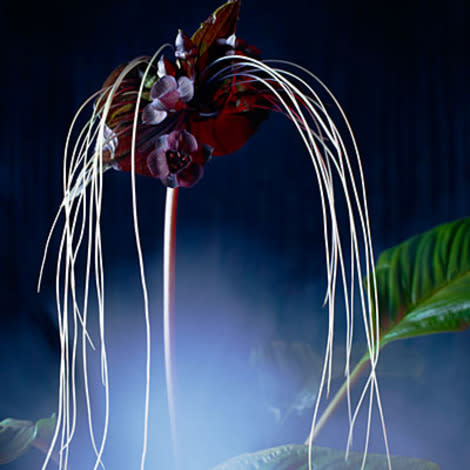
The bat cave
Line up a series of black bat lilies (Tacca chantrieri) on a mantel; with their winglike webbed bracts, they look ready to take flight. Their whiskers are a mystery--some speculate they provide a pathway for ants to crawl up for pollination. But as Mark Pendleton says: "They're just one of those things that makes people go 'Wow.'"
To grow: Bat lilies need mild temperatures and shade. Indoors, keep in filtered light and don't let the soil dry out.
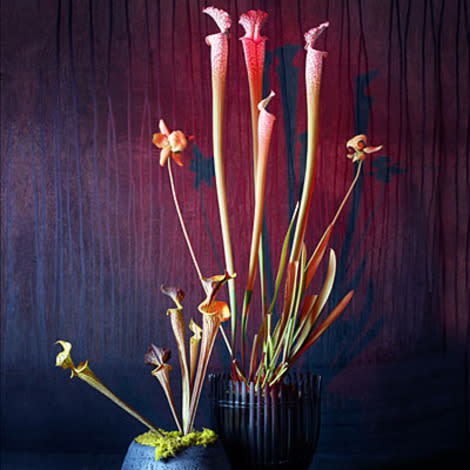
Witches' brew
The elegant long throats on these pitcher plants (Sarracenia) have a deadly purpose: to swallow bugs after luring them in with a liquid in the top flaps. "Bugs get so drunk off the nectar that you can just watch them fall right in," says Rob Co, a Northern California carnivorous-plant collector.
To grow: Pitcher plants can grow outside, except in the coldest climates. Indoors, give them bright light.
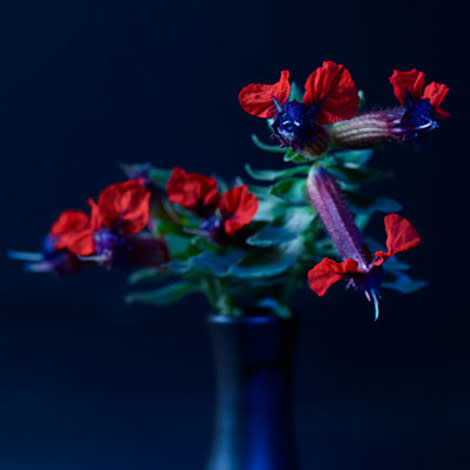
A face only a mother could love
Look closely at this bat-face cuphea and you'll see why it gets the name--the picture-perfect face of a bat, ears and all. It's totally tiny, but beyond creepy.
To grow: Cuphea grows as an annual everywhere.
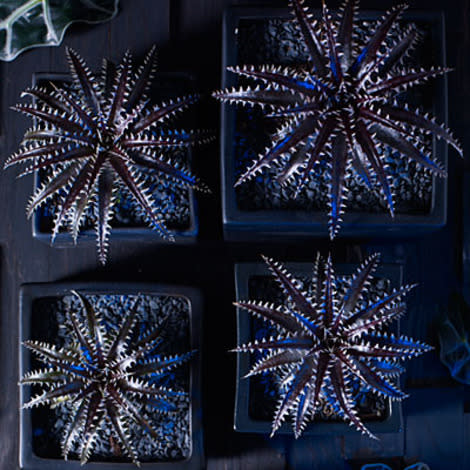
Freaky from above
Bromeliad-family Dyckia have graphic, shark-like teeth. Place them as a centerpiece on a table for a spiny, perfect display.
To grow: Dyckia plants need mild temperatures and minimum water. They're happiest outdoors in arid, frost-free environments.
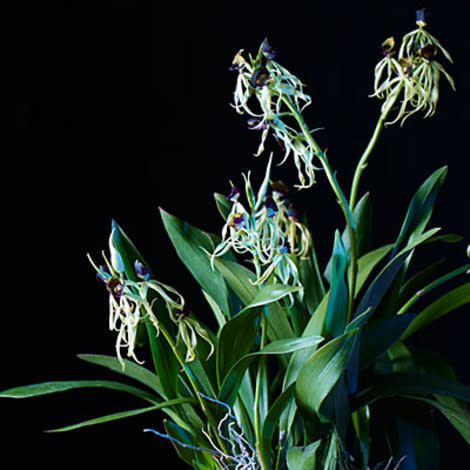
Octopi on sticks
Like little sea creatures tethered to sticks, Octopus orchids (Prosthechea cochleate) are a great addition to Halloween decorations.
To grow: These orchids can take a light frost if they're protected, but should be moved indoors in a hard freeze. They don't like to be dried out or exposed to hot sun. An atrium or porch is ideal.
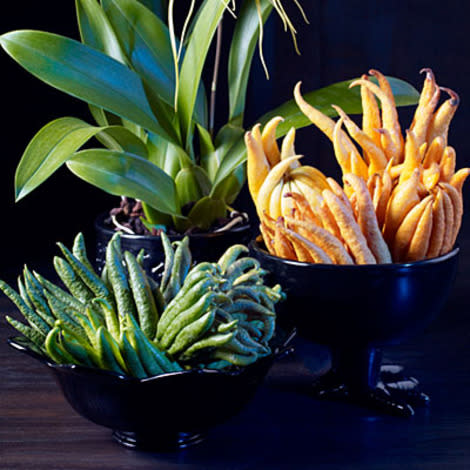
Take my hand, if you dare
What seems like an inviting dish of fruit is actually a bowl full of claw-like citrus, Buddha's hands. Though they look scary as can be, their zest is actually absolutely delicious in your Halloween cocktails.
To grow: Citrus need protection from frost. Cover them in the case of a light frost, or bring them inside in cold-winter climates.
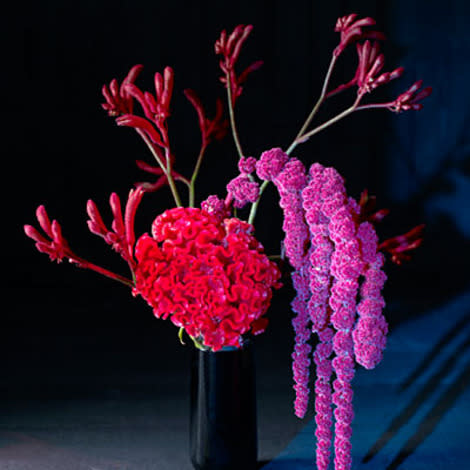
It's in the veins
The pink and purple tie-dyed look of amaranth 'Early Splendor' is awesome on its own, but it's the bright pink stem that really takes it over the top. The plant looks like it's being supported by a giant, pulsing blood vessel.
To grow: Amaranth grows as a summer annual in all climates.

Zombie fingers
Lovingly referred to as, "dead man's fingers" by designer Daniel Nolan of Flora Grubb Gardens, Cotyledon orbiculata oblanga 'Flavida' makes us all feel like we're living in a post-Apocalyptic world and old men are crawling out from the ground.
To grow: This succulent does best in sun or shade in frost-free coastal climates.

Stegosaurus back
It's called a slipper plant, but we think that the flower-like bracts of this Pedilanthus bracteatus look alarmingly like the back of a stegosaurus. Though it's native to Mexico, the long, arching branches and minimal amount of leaves make this whole plant look so foreign--like it's dropped down from another planet.
To grow: Slipper plant is a succulent. It needs quick draining soil, full sun, and is hardy down to 25°.
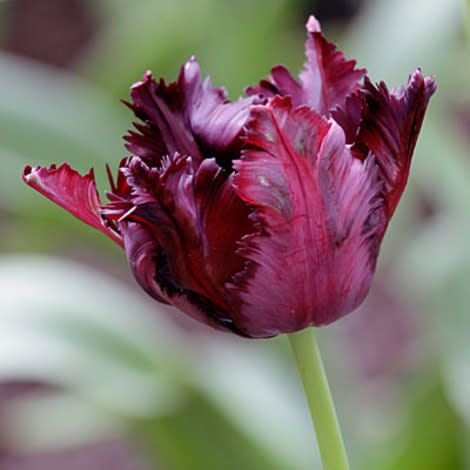
Black and frilly
After years of breeding, 'Black Parrot' has risen to the top as one of the darkest tulips on the market. The fringed petals have us reminiscing about Black Swan. So dark, so beautiful.
To grow: Plant in fall for a spring bloom. Available from longfield-gardens.com.
More gothic party ideas

Skeleton crew
The stalks of the nearly-leafless cattails euphorbia (Euphorbia leucadendron) look almost like skeletal bones. Put the houseplant on center stage for a spooky Halloween display.
To grow: Outside in frost-free climates, indoors in bright light. Needs very little water.
Of course, when it comes to Halloween decor, you can't forget the classic pumpkin. Here are some of our favorite freaky varieties. Most of the plants listed here will grow well in various climates. Before you plant, make sure your chosen variety will grow in your climate zone. And if you don't know your climate zone, look it up here.
